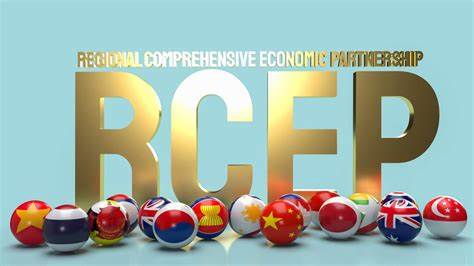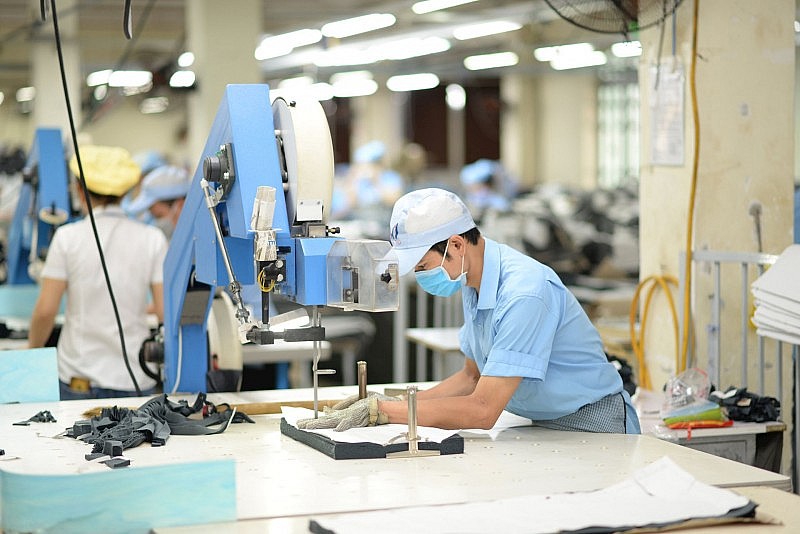Tổng số bài đăng 397.
January 1, 2024 marks the second anniversary of the launch of the Regional Comprehensive Economic Partnership (RCEP).

RCEP is the world's largest new-generation FTA with 15 members, including 10 ASEAN countries and China, South Korea, Japan, Australia and New Zealand. The total population of RCEP is about 3.5 billion people and the trade volume is worth 10.7 billion USD, accounting for nearly 30% of global trade.
RCEP is considered an important achievement in the economic integration process of the Asia-Pacific region. Over the past two years, RCEP has continued to promote increasingly deeper regional economic and trade cooperation, creating strong momentum for regional economic integration and development. RCEP covers various aspects of trade and investment liberalization and facilitation, with a main focus on tariff reduction and elimination. Over 90% of goods traded in the region will gradually enjoy zero tariffs.
In addition, RCEP plays a key role in promoting flexible supply chains, creating development opportunities for small and medium-sized enterprises, and facilitating the development of cooperation in advanced industries.
China's Ambassador to ASEAN Hou Yanqi said that through unified tariff commitments, rules of origin, trade and investment liberalization and facilitation, and other trade rules, RCEP has maximized the integration of 27 trade agreements and 44 investment agreements of regional members. This effectively promotes the development of the multilateral trading system and brings tangible benefits to the parties involved.
Since the implementation of RCEP, China has maintained its position as the largest intermediate goods trader in the region. Meanwhile, the majority of intra-regional intermediate goods trade of RCEP member countries accounts for nearly or more than 50% of global intermediate goods trade. Statistics show that in 2022, China's imports and exports with other RCEP member countries increased by 7.5% year-on-year. In the first 11 months of 2023, China's intermediate goods trade with Cambodia and Laos reached 65.78 billion yuan and 29.55 billion yuan, up 2.4% and 35.8% year-on-year, respectively.
RCEP's regional industrial and supply chain cooperation has been growing steadily. RCEP has facilitated industrial cooperation between China and ASEAN countries such as Vietnam, Indonesia and Malaysia, as well as Japan and South Korea, in areas such as textiles, electronic components, new energy vehicles and batteries. As Indonesia has abundant nickel and lithium resources and China has mature advantages in the automobile and new energy battery industries, both sides have strengthened cooperation and integration in the clean energy sector through RCEP.

RCEP has brought new opportunities to small and medium-sized enterprises (SMEs). Tariff reductions on goods have reduced trade costs for SMEs, while simplified customs procedures and more convenient trade have improved the business environment for SMEs.
RCEP has brought benefits from digital economic cooperation. China and ASEAN have adopted the Initiative to Enhance Cooperation on E-Commerce and established a digital partnership to strengthen digital infrastructure construction. Chinese companies have seized the digital economic development opportunities brought by ASEAN and other RCEP partner countries, and explored the potential of the online market.
The cumulative rules of origin have also promoted the free flow of economic factors in the region and enhanced the division of labor and cooperation in the production process among RCEP members. In this way, relevant industries can adjust more flexibly to effective principles and member countries can arrange industrial and supply chains more reasonably.
The RCEP Agreement helps businesses take advantage of the requirements of rules of origin. This helps promote bilateral trade such as between Vietnam and Australia. According to data from the General Department of Customs, the total trade turnover of goods between Vietnam and Australia in January 2024 reached 1.25 billion USD, up 43.4% over the same period in 2023. Previously, bilateral trade between the two countries reached 15.7 billion USD in 2022 and nearly 14 billion in 2023.

Over the past two years, RCEP member countries have cooperated with relevant parties to comprehensively and effectively implement RCEP, promote the development of trade in goods, ensure effective implementation of preferential rules of origin, implement high-standard customs procedures and trade facilitation rules, and improve the level of openness in trade in services.









